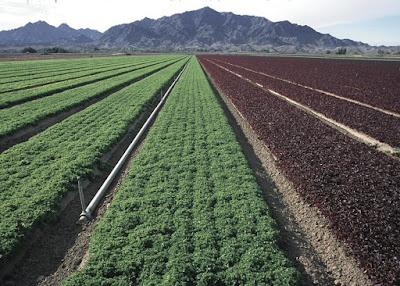Many
farmers probably take for granted that their center pivot system is applying
water evenly across the spans of the system.
Unless there is something glaring, such as a broken hose, or leak in a
pipe, what looks good to the eye may seem good enough.
A client of mine was certain that he was getting even water application
across the spans of his several dozen center pivots. I began to question that assumption while
scouting some of the corn fields, and doing soil moisture tests, which
suggested more water was being applied on some spans than on others.
For a cost of about $20 each, I purchased several measuring pitchers,
placed one under each of the seven spans of the center pivot system, and the
results were a shock to the farmer. From
a cross section of the pivots on this large farm, and with different crops and
varying water application rates based on how he was operating the pivots, we
found a range from high to low of over 20% on average!
In other words, where a particular span on a
pivot might be delivering .50 of an inch of water, a nearby span was putting
out .40 of an inch. Similarly, because
this farmer was applying liquid fertilizers through the pivots, some parts of
the field were getting too much fertilizer, and others not enough.
In this particular case, the farmer was preparing to spend thousands of
dollars to set up variable rate irrigation on many of his center pivots. But he
changed his mind based on the results of this extremely low cost, and low tech,
evaluation, of his water application patterns. He realized that, before
spending thousands of dollars per pivot to go with variable rate irrigation, he
had to address the basic issues of re calibrating each pivot so that the nozzles
were set to deliver water at an even rate.
Benedict T. Palen, Jr., is a fifth
generation farmer who provides consulting services to farms in the US and
overseas.
Learn More:

No comments:
Post a Comment